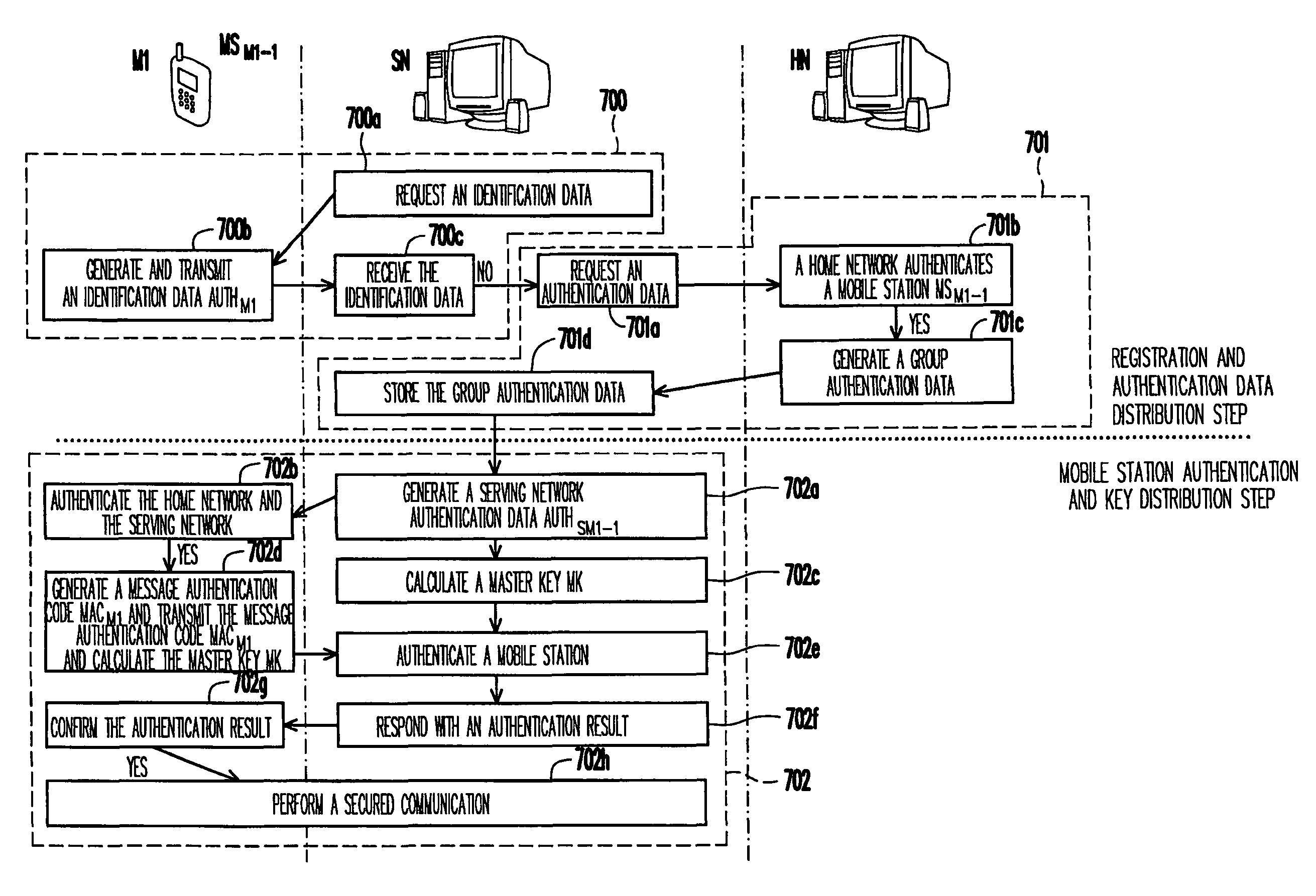Group authentication method
a group authentication and authentication method technology, applied in the field of authentication methods, can solve the problems of reducing the security level of the wireless network compared to the wired network, the bandwidth and speed of the wireless network are also much lower than those of the wired network, and the hn of the home network cannot determine, so as to reduce the delay of handoff caused by authentication
- Summary
- Abstract
- Description
- Claims
- Application Information
AI Technical Summary
Benefits of technology
Problems solved by technology
Method used
Image
Examples
Embodiment Construction
[0061]Examples illustrated in the accompanying drawings of reference will now be made in detail to the present preferred embodiments of the invention. Wherever possible, the same reference numbers are used in the drawings and the description to refer to the same or like parts.
[0062]Based on the concept of group communication, users living in the same community, working with the same company, or taking buses on the same route can all be considered as a group, and the members in the same group tend to roam to the same place and perform authentication. Accordingly, the present invention proposes a concept and an infrastructure of group authentication to allow the mobile stations in the same group to share a group authentication data to enhance the authentication efficiency when a group of mobile stations hand off.
[0063]FIG. 7 is a flowchart of a group authentication method according to an exemplary embodiment of the present invention, in which a mobile station hands off for the first t...
PUM
 Login to View More
Login to View More Abstract
Description
Claims
Application Information
 Login to View More
Login to View More - R&D
- Intellectual Property
- Life Sciences
- Materials
- Tech Scout
- Unparalleled Data Quality
- Higher Quality Content
- 60% Fewer Hallucinations
Browse by: Latest US Patents, China's latest patents, Technical Efficacy Thesaurus, Application Domain, Technology Topic, Popular Technical Reports.
© 2025 PatSnap. All rights reserved.Legal|Privacy policy|Modern Slavery Act Transparency Statement|Sitemap|About US| Contact US: help@patsnap.com



